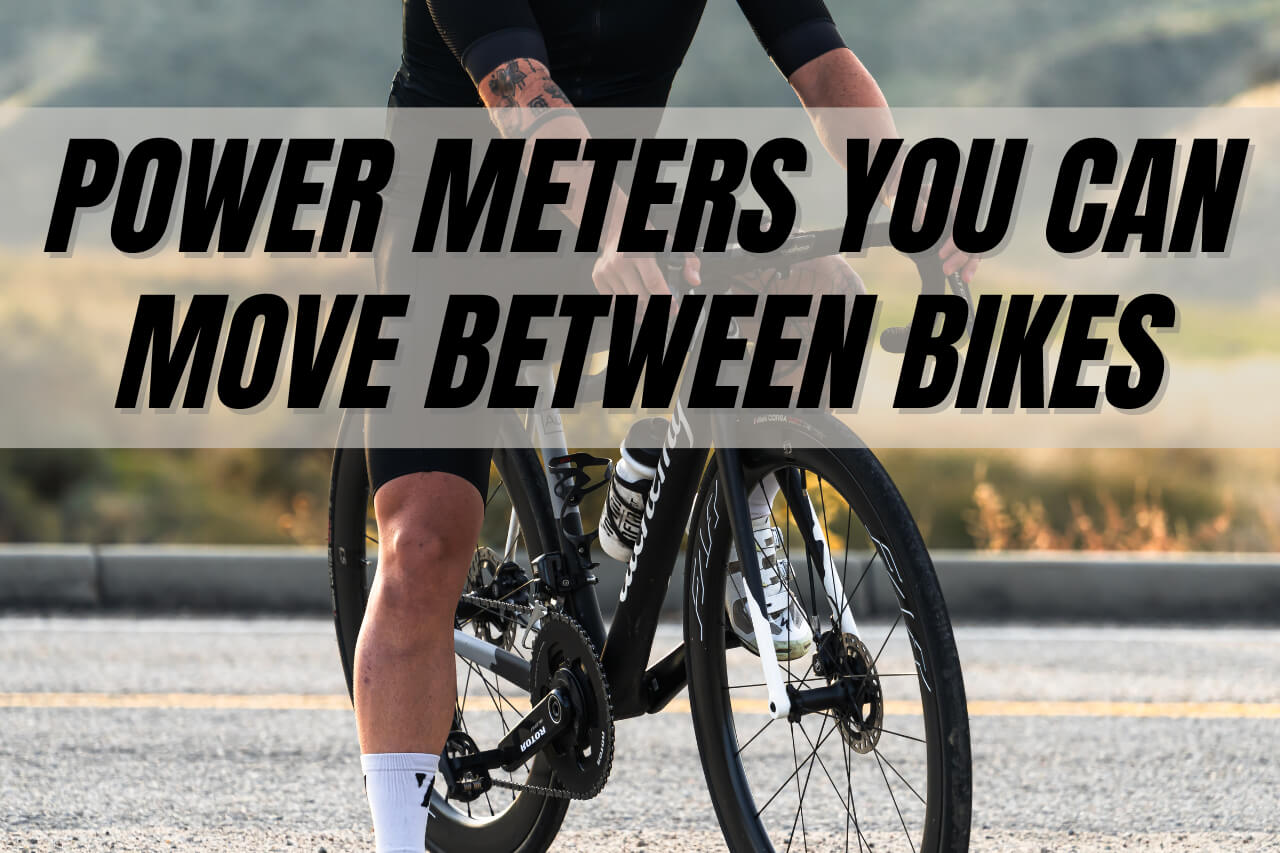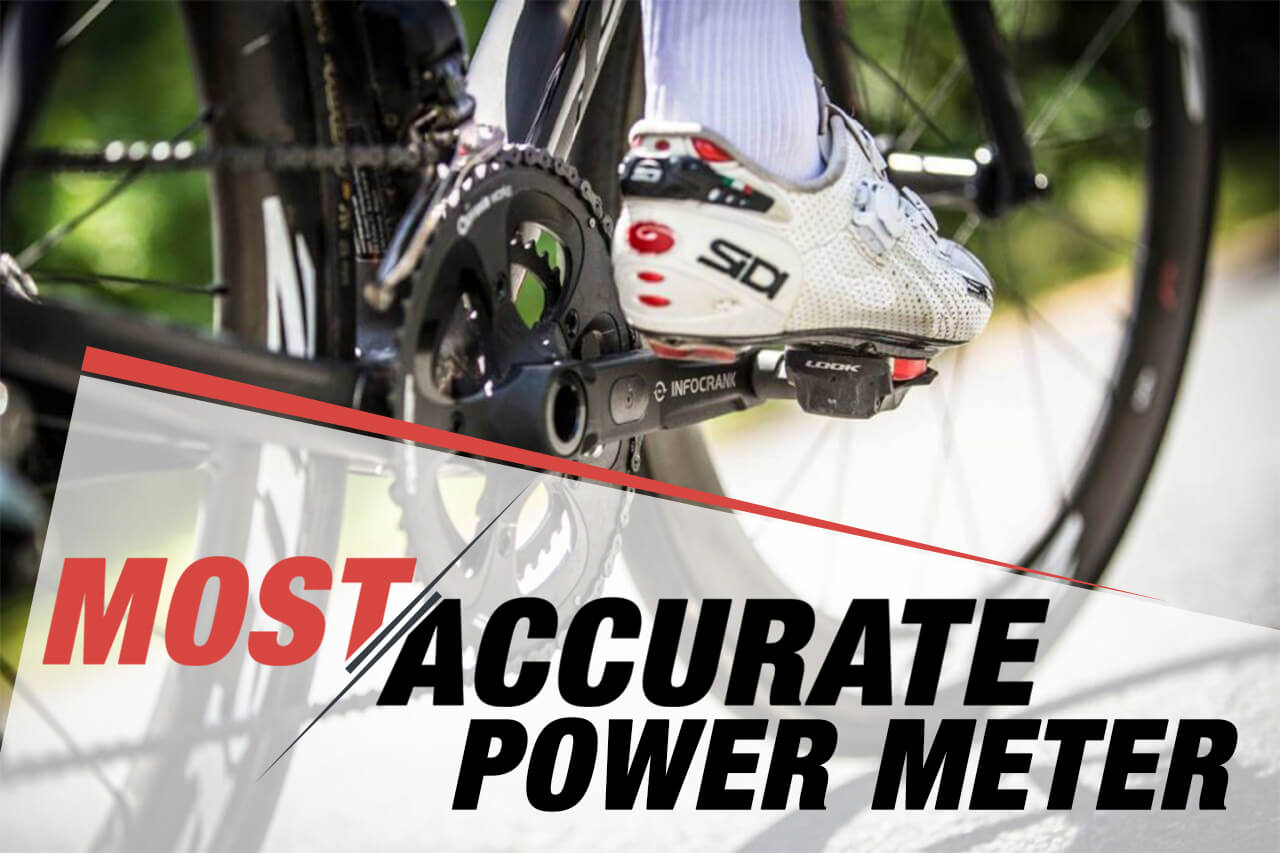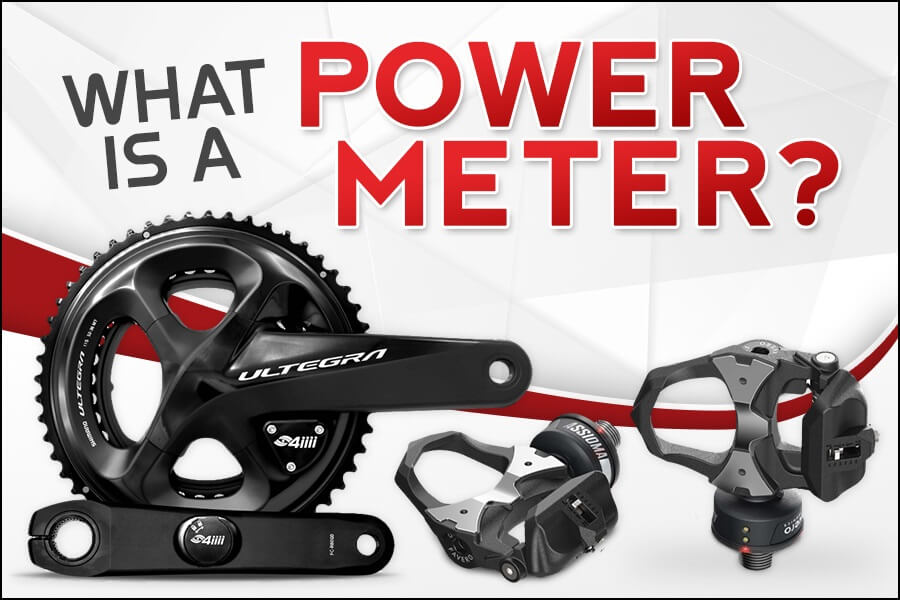Heart rate monitors are popular training aids. They are affordable, easy to use, and can provide valuable information when it comes to training and tracking your fitness. Power meters are more expensive than heart rate monitors, but they provide data that is not influenced by outside factors. This includes weather, emotions, altitude and more. In this article, we wanted to review some of these drawbacks of training exclusively with a heart rate monitor, as well as contrast heart rate monitors to power meters in terms of their training effectiveness. Our goal is to show you why power meters can provide you with a much more objective measurement of the work you are performing and that the ultimate goal is to train with power and heart rate.

Heart Rate Monitor Issues
A heart rate monitor allows you to measure your heart rate in real time, as well as record the data for later analysis. The most popular heart rate monitors for cycling are chest strap heart rate monitors, although there are some arm band and wrist based heart rate monitors. Heart rate data, measured in beats per minute (BPM), is sent to a receiver. This is typically a GPS sports watch or handlebar mounted cycling computer. While heart rate monitors are affordable and easy to use, they can suffer from the following issues.
Issue #1: Input vs. Output
Joe Friel, elite triathlon and cycling coach and author of numerous cycling books including The Cyclist’s Training Bible, does a nice job of putting the relationship between power meters and heart rate monitors in perspective. He explains that heart rate monitors only tell you how great your effort is. In other words, the heart rate monitor is measuring your body’s response to the work. This is considered an “input”.
An input doesn’t tell you what you are accomplishing. It only tells you how hard the effort is. The actual amount of work you are performing (the “output”) is not really known. Joe gives the example of a tachometer on a car. A tachometer tells you how hard the engine is working. But it does not tell you if it’s producing a little power or a lot of power.
Issue #2: Your Heart Rate Can Vary Day-to-Day
Things such as temperature, hydration levels or fatigue can all have an impact on your heart rate. Since your heart rate is easily influenced by these factors, it often makes it difficult to use as a way to measure the intensity of your efforts. Moreover, there are individual differences in the power-heart rate relationship. As fitness improves, you heart rate falls for a given power level. You might produce 200 watts at 150 BPM at the start of the season, and as fitness improves, find yourself producing 200 watts at 140 BPM later on.
| Factor | Explanation |
| Warm or cool temperatures | If you become too hot or too cold, your body senses what is called a thermal stress load. Your heart pumps more blood which is sent to your skin to enhance heat dissipation in order to cool you. In cooler temperatures, the brain diverts the blood throughout the entire body to keep it warm thus lowering heart rate. Extreme temperatures can change your heart rate by 10 beats per minute or more. |
| Medications | Depending on the medication, heart rate can either increase or decrease. Antihistamines and anti-depressant drugs typically increase blood flow, while beta-blockers and blood pressure medications tend to slow down blood flow. |
| Dehydration | As you become dehydrated, your blood becomes thicker and waste products build up in the bloodstream. The body attempts to transport additional nutrients and remove toxins. This causes your heart to work harder to maintain constant cardiac output. |
| Emotions and anxiety | Heart rate can rise due to emotions or anxiety. We have all experienced this before – both on and off the bike. Your body enters what is called Fight or Flight and prepares for the upcoming situation or activity by increasing heart rate and releasing glucose for energy. |
| Caffeine | Caffeine is a stimulant that influences the nervous system and increases heart rate. Caffeine mimics the effect of adrenaline, a natural hormone responsible for elevating heart rate. |
| High altitudes | At high altitudes (typically considered 2,000 meters or higher), there is less oxygen in the air so you are unable to pull the same amount of oxygen into your lungs with each breath. As a result, heart rate increases to deliver oxygen to cells in your body more efficiently. |
| Elevated fatigue level | When heavily fatigued, your heart rate is lower as the brain signals blood flow for recovery instead of sending it to your muscles. |
Issue #3: Heart Rate Is a Lagging Indicator
Heart rate monitors measure the physiological effects of an effort. This mean that it takes time for your body to react to harder or easier efforts. If you’re doing an interval with a heart rate monitor, it will take time for your heart rate to rise in reaction to your increased effort. This can make it easy to start the interval too hard or too easy as you have to wait for your heart rate to rise. It will also take time for your heart rate to drop when starting an easier effort. With a power meter, you can hit the exact intensity target right with no guesswork. This means no wasted training time, precise intensity, and better intervals.
Issue #4: Cardiovascular Drift
Frequently, about 10 minutes into a steady state interval, an athlete’s power output can start to decline despite a constant heart rate. This is called cardiovascular drift (CVD or CVdrift) and can be made worse by a lack of proper hydration. If you’re using a heart monitor alone, you won’t be able to pick up on this drift but a power meter will.
Power Meters Precisely Measure Your Workload
Power meters, on the other hand, measure your output – that is, how much power you are producing. If we go back to our Input vs. Output analogy, the output is the second and much more important part of the equation. The output is what you are doing or achieving. This is much more objective measurement of the work you are performing. When you know the output, your training will become vastly more effective.
In addition, power meters don’t suffer from the other issues listed above. Your power doesn’t vary day-to-day, it doesn’t ramp up slowly, nor does it drift. As the saying goes…a watt is always a watt.
Heart rate monitors are great and we suggest you use one. Our point is just that heart rate alone just isn’t very meaningful. What if your heart rate is 15 beats higher than normal, what does this mean? Are you riding harder, are you recovering from a sickness or is it hotter outside than normal? These are great things to recognize and should help inform the relation to watts and effort that you are experiencing.
In Hunter Allen and Andrew Coggan’s book Training and Racing with a Power Meter, the authors go as far as to say that going off heart rate alone could easily misinform you regarding your actual performance and can “undermine your confidence”. Input data such as heart rate just isn’t as meaningful until it is compared with some measure of output.
Heart Rate Monitor + Power Meter
Power meters address the shortcomings of a heart rate monitor as they allow you to quantify exactly how hard you are working. (By the way, this is in addition to the many other reasons to use a power meter!) However, the ideal option is to train with both a heart rate monitor and a power meter. When combined, athletes can learn a lot about their performance and how their body performs under different conditions.
For example, a key training metric is Efficiency Factor (EF). This is simply your average power divided by your average heart rate for a given workout or interval. As previously mentioned, when your fitness increases, you will generate more power at a given heart rate. This is a telltale sign that your fitness is improving. Or, if you start to see significantly lower power at a given heart rate, that’s usually a sign that you are ‘over-trained’ and your body needs a break. So the point here is, when you combine a power meter with a heart rate monitor, you get the full equation (the input and output) and a much better picture of your performance and fitness!

 XCADEY XPOWER-S GEN2 ROTOR ALDHU Road Power Meter Crankset
XCADEY XPOWER-S GEN2 ROTOR ALDHU Road Power Meter Crankset  4iiii PRECISION 3+ Shimano GRX RX810 Power Meter
4iiii PRECISION 3+ Shimano GRX RX810 Power Meter  power2max NGeco SRAM MTB Power Meter
power2max NGeco SRAM MTB Power Meter 

